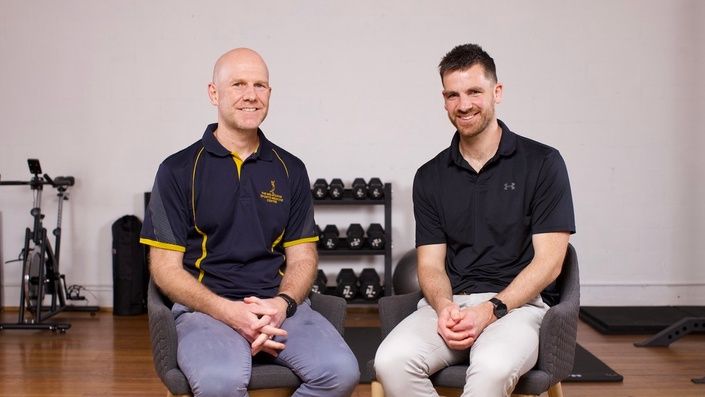Introduction
The Late Stage ACLR Rehab: The Court Based Athlete Masterclass, taught by Mick Hughes and Steve McAdam, provides a complete distillation of the management of the late stage ACLR court based athlete. This Executive Summary provides clinically relevant, actionable information that may be useful to health professionals.
Part 1: Rehabilitation drills to optimise performance and psychological readiness
Goals of end stage ACL rehab should be to reduce re-injury rate, physically and psychologically ready them to perform and lastly to encourage self-maintenance. The athlete’s rehab should include agility, landing and plyometric drills with a focus on quality over quantity. Furthermore, the athlete should be routinely assessed for readiness for return to sport.
- For all sport’s specific rehab drills, start in a controlled environment and progress into increased chaos and unpredictability to continue challenging the athlete.
- It can take up to 18-24 months post surgery for the athlete to return to previous level of performance, so it’s important to have honest conversations with the athlete regarding when it is appropriate to return to sport even if they are objectively and subjectively prepared to.
- Improving speed of contraction and reducing ground contact time can have a great stimulus on tendon health particularly with a court-based athlete. Also exposing them gradually to a medial direction can prep them well for the future.
- Use tools such as the ACL-RSI or TSK-11 to assess the athlete’s psychological readiness as well as specific strength measures to back them up.
Masterclass Preview
Plyometrics are essential to a successful ACLR rehab and return to sport.
Enjoy this free preview of Steve and Mick discussing how they incorporate plyometrics into their rehab plans.
Part 2: Clinical and court based testing considerations
Late stage rehab should include specific strength, power and hop testing as well as adequate court based testing. For all the data collected, the clinician should consider both the normative data and performance markers relative to each athlete when assessing a return to sport.
- Having strong quads and calves are extremely important in basketball, therefore the 6RM test with isolation and kinetic chain exercises is good for measuring limb symmetry.
- Measuring data such as height, speed and reactive strength index from a CMJ (DL/SL), drop jump test (DL/SL) and triple hop is a good way to look at power and symmetry and can guide your exercise prescription as the clinician. Using force plates, Vertec, phone apps or chalk on a wall are all valid ways of measuring this.
- Before unrestricted training, the athlete should have completed all the aspects of basketball in their training. Having an adequate length of 3 weeks minimum of training exposure, would benefit the athlete greatly in terms of psychological and physical readiness for a smooth return to sport.


